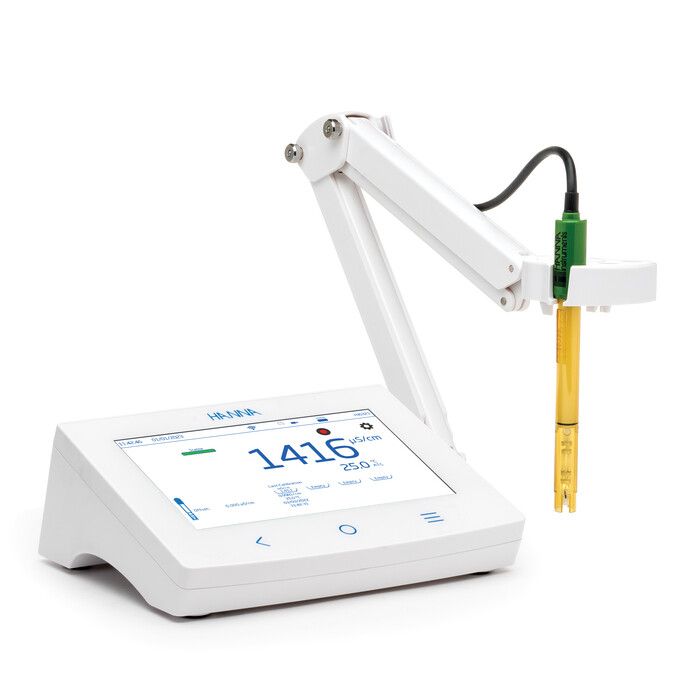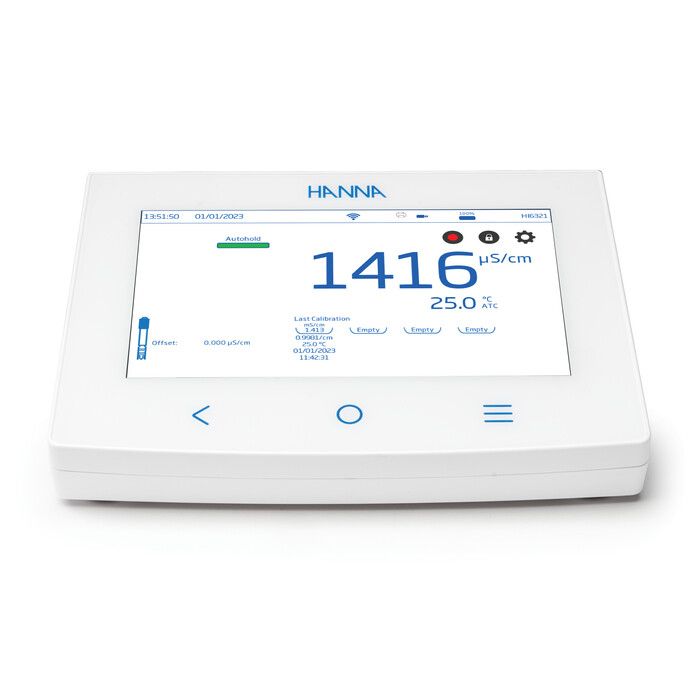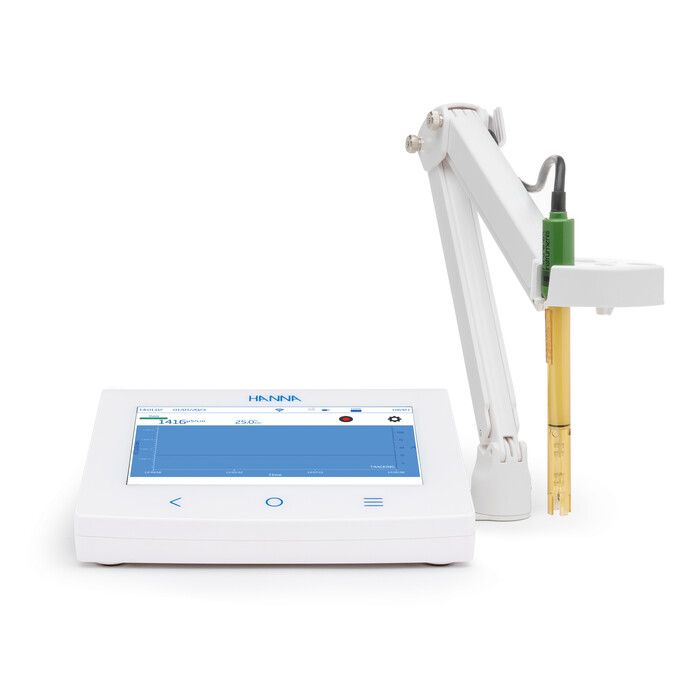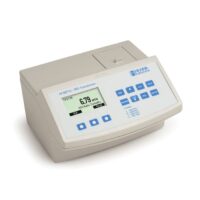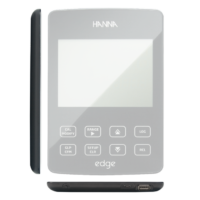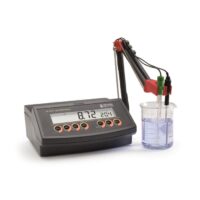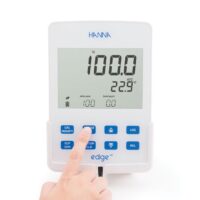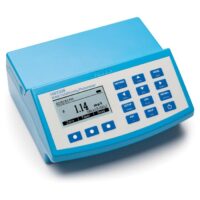Description
HI6321 is a streamlined Conductivity/Resistivity/TDS/Salinity/Temperature benchtop meter with a large touch screen display, comprised of a housing and an integrated conductivity measurement module.
Compact and easy to operate, the HI6321 includes Hanna’s HI7631233 four-ring conductivity/ resistivity/TDS/salinity probe.
Recommended for a wide range of industrial process water applications, HI7631233 provides stable measurements over a wide measurement range and does not require frequent calibrations. An integral temperature sensor measures the process temperature and adjusts the measured conductivity to a reference temperature by applying specialized compensation algorithms:
- Linear: appropriate when it is assumed that the temperature coefficient of variation has the same value for all measurement temperatures.
- Standard: appropriate for high-purity water measurements and documented in ASTM Standard D5391-14. This setting should be used for >1Mohm.cm resistivity measurements.
- Natural: appropriate for natural ground, well, or surface water (or water with similar composition) in accordance with ISO7888 standard.
The result is reliable electrolytic conductivity (EC), TDS (Total Dissolved Solids), resistivity, or Seawater Salinity in percent, psu, or ppt units.
TDS is a calculated value based on the conductivity of the solution (TDS = factor x EC25). A TDS factor is a conversion factor used to change an EC measurement to a ppm measurement.
Sal psu: The practical salinity of seawater relates the ratio of electrical conductivity of a normal seawater sample at 15 ℃ and 1 atmosphere to a potassium chloride solution (KCl) with a mass of 32.4356 g/Kg water at the same temperature and pressure. Under these conditions the ratio is equal to 1 and S=35. The practical salinity scale may be applied to values 0 through 42.00 psu at temperatures between 0 to 35 ℃.
Sal ppt: measurements expressed in ppt are based on the Natural Seawater Scale that extends from 0.00 to 80.00 g/L and covers 10 to 31 ℃ temperature range. It determines the salinity based upon a conductivity ratio of sample to standard seawater at 15 ℃ and an approximate salinity value of 35 in seawater.
Sal %: in this scale 100% salinity is equivalent to roughly 10% solids.
User interface
- 7-inch capacitive touch screen with multi-touch support
- Capacitive touch back, home and system menu keys
- User-friendly icons and symbols allow users to easily navigate and interpret the instrument functions.
The user can select between five different views:
- Basic measurement configuration
- Simple GLP with calibration information
- Full GLP with electrode status and calibration point details
- Live updated, interactive graph
- Tabulated data with date, time, and notes
Measurement
- Measure µS/cm, mS/cm (Conductivity); ω·cm, kω·cm, Mω·cm (Resistivity); ppm, ppt (TDS); ppt, PSU,
% (Salinity) with temperature
- Application-specific profiles allow quick and direct measurement without the need to update the sensor
and system settings
- Active log during measurement o Measurement stability indicator (using the Stability Criteria setting)
- Reading modes: direct and direct/autohold
- Temperature compensation can be Automatic or set manually
- Audible and/or alarm messages for measurements outside of predefined limits
- Galvanic isolation for conductivity measurement
Calibration
- Standard single point salinity calibration in 100% salinity standard, with the reading salinity scale set to %
- Standard single or multiple conductivity calibration with standards
- Non-volatile memory saves data and settings
Logging
- Data log collection of at least 1, 000, 000 data points (with time and date stamp)
- Logging types: manual, automatic, autohold
- Sample ID for manual and Autohold data
Connectivity features & services
- Transfer logged data to a USB thumb drive
- Log files that include measurements and calibration data (as .csv file)
- FTP and email for log export via Ethernet and Wi-Fi connection o USB type A for USB stick,
keyboard, and printer
- USB type C for USB stick and PC connection

